You'll rue the day you knocked down the Tricorn '“Â Simon Carter
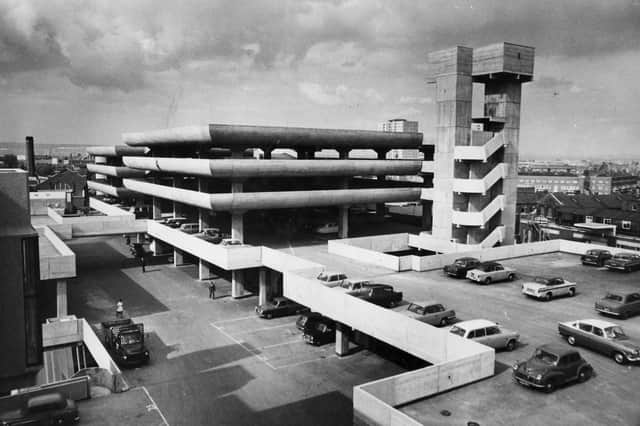

Namely this '“ why oh why oh why did you let Portsmouth City Council knock down the Tricorn centre?
Seriously, why?
My partner has lived in Portsmouth for the best part of 30 years, and she hated the Tricorn. 'It was ugly,' she tells me.
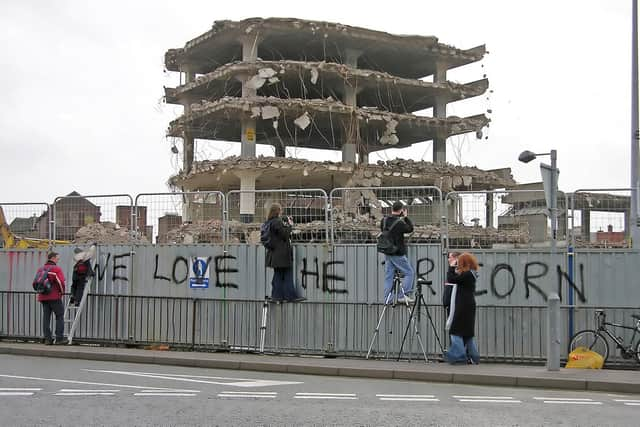

Advertisement
Hide AdAdvertisement
Hide Ad'And the student halls they call the 'Fag Butt' aren't?' I replied instantly. 'Or those flats with the really small windows on the left hand side of the M275 as you drive into Portsmouth? Or those slabs of flats in Somers Town whose residents were evacuated from a few months ago?' I was warming to the task, as you can see.
The Tricorn was an 'architectural orchestration in reinforced concrete that is the equivalent of Berlioz or the 1812 Overture'. So said The Observer newspaper's architecture critic Ian Nairn shortly after it opened in August 1966.
Just think '“ England winning the football World Cup AND the Tricorn opening in the space of a few weeks! What a time to be alive!
Heady days indeed, though it's fair to say not many locals '“ not even the ones who liked it '“ would ever have compared Rodney Gordon and Owen Luder's brutalist masterpeice with Tchaikovsky's well-known piece of classical music. And not even I would ever have compared the Tricorn to French composer Hector Berlioz, mainly because prior to researching this piece I had never heard of him...
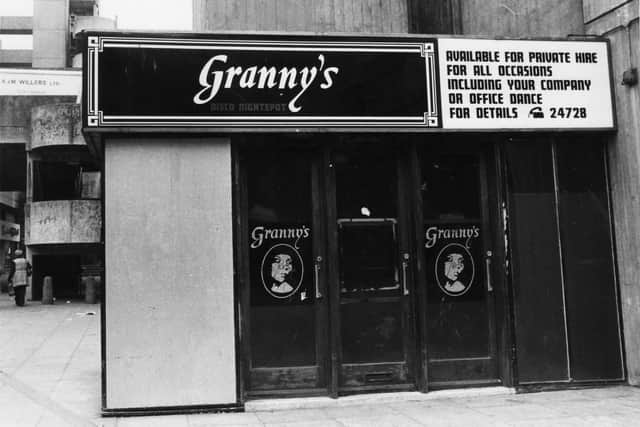

Advertisement
Hide AdAdvertisement
Hide AdYes, I know the arguments peddled by those who despised it. It was damp, it was a haven for drug users and, in 2001, Radio 4 listeners voted it the most hated building in the UK.
Prince Charles infamously described the Tricorn as 'a mildewed lump of elephant droppings' .But those who spoke out against it missed the point '“ the structure was a piece of art, just the same as a painting, a sculpture, a statue or a musical composition. It was just a very large one, albeit in reinforced concrete. But the bottom line was this '“ it WAS art, and what is beautiful in the eye of one beholder is a 'monstrous carbuncle', to borrow another Prince Charles phrase from the 1980s, to another. That's the whole point of art. If everyone found the same thing wonderful, we would exist in a dull world.
Come the mid-1990s, the Tricorn was also empty in terms of shops, which was a bit of a problem for a concrete behemoth whose main raison d'être was a shopping centre. It once also housed a couple of pubs and a nightclub. In the early '70s, the likes of Slade, the Sweet, Barclay James Harvest, Thin Lizzy, Thunderclap Newman, Uriah Heep and Roxy Music '“ some pretty famous names there, to say the least. The walls that were bulldozed in the early noughties could tell some musical tales.
Thinking about it, Charles' famous 'monstrous carbuncle' comment helped drive a few more nails into the Tricorn's coffin.
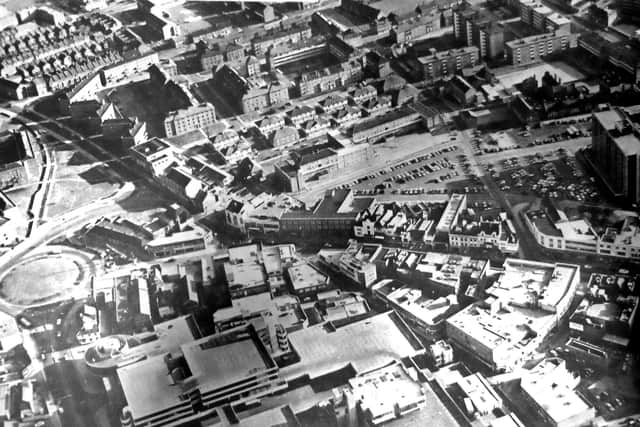

Advertisement
Hide AdAdvertisement
Hide AdSupposedly unloved, along with many examples of '60s brutalism, the public perception is it never really stood a chance as new decades heralded a rapid movement away from concrete utopia.
But some buildings received more sympathetic treatment than others.
Brace yourself as I introduce the word 'Southampton' into this piece, but anyone familiar with visiting that city's main railway station will be familiar with the great concrete hulk of the Wyndham Court flats complex close by. Another classic example of brutalism, built about the same time as the Tricorn, it was granted Grade II listed status in the late 1990s. The Tricorn was not blessed with such good fortune. And all Portsmouth people should be sad about that.
Familiar with London's South Bank? The National Theatre? The Hayward Gallery? The latter two structures are wonderful examples of brutalism and looking at them easily bring to mind the Tricorn. Large pieces of concrete, unusual shapes. Not hugely easy on the eye. The key difference is the former two are still standing and where the Tricorn once stood is now a car park. Another big difference is this '“ the Hayward Gallery was added to the protected list by the World Monuments Fund in 2001, three years before the Tricorn was demolished.
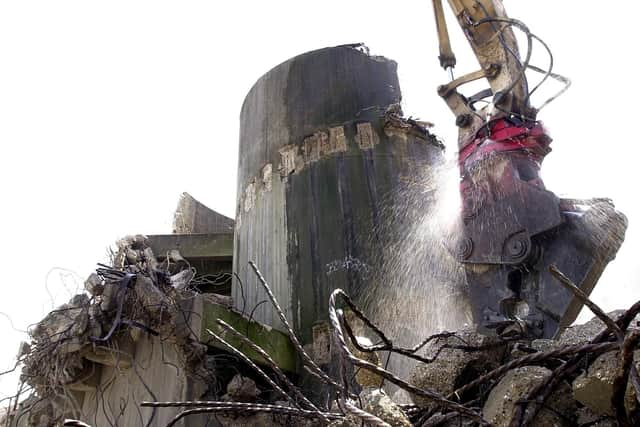

Advertisement
Hide AdAdvertisement
Hide Ad'Look at what you could have won?' That was Jim Bowen's catchphrase on the '80s TVÂ game show Bullseye whenever finalists failed to win the top prize, which was often. And it was always a speedboat.
Anyway, the Tricorn is Portsmouth's equivalent '“ 'look at what you could have had'.
With a little love '“Â Â and obviously no little investment either '“ it could have been this city's equivalent of the South Bank.
The Tricorn could have been a wonderful arts hub. It had the eye-catching architecture to start with, which gave it a wonderful Marmite feel. You loved it or hated it. I guess most people hated it, which is why it came down. Either that or the people in power hated it, which was enough to see the wrecking balls brought in. Whatever, it was the wrong call.
Advertisement
Hide AdAdvertisement
Hide AdPortsmouth has some superb buildings from a great many eras, a large number given a wonderful historic polish '“ Southsea Castle, the Georgian and Victorian splendours of Southsea, the Guildhall and Fratton Park '“ with its Archibald Leitch-designed South Stand '“ to the Anglican cathedral and the '80s marina development at Port Solent and on to the 21st century shopping and living Utopias which are Gunwharf Quays and the Lipstick. I could go on '“ the forts, both the ones on the top of Portsdown Hill and in the Solent '“ but hopefully you get my point.Â
Most of the above, obviously, are great reasons to visit Portsmouth. I just happen to believe the Tricorn '“ revamped with art galleries and stages for 'cutting edge' theatre shows/gigs/comedy acts '“ could have been, with a healthy dose of visionary zeal, another one.Â
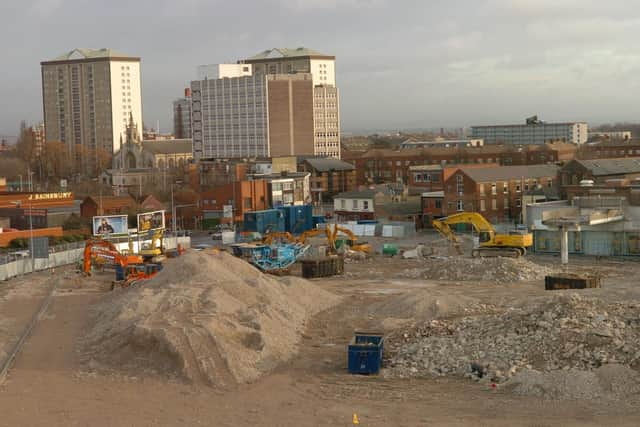

Retro, nostalgia, call it what you want, is big business these days. Look at the resurgence in popularity of vinyl records. They said that industry was dead, but look at it now.
The Tricorn could now be flourishing, a haven for bearded hipsters with their vaping equipment and tattoos.Yes, it would have cost money but private investment could have been sought along with cash from the public purse. The best cities are the ones who can see the future before it smacks them in the face.
Advertisement
Hide AdAdvertisement
Hide AdPut simply, the Tricorn was one of the greatest examples of brutalism ever constructed in this country. It's up there with the famous Trinity Square car park in Gateshead, immortalised in the 1971 film Get Carter.
Prince Charles was no doubt celebrating on July 25, 2010, for that was the day work started on demolishing that building as well. Eventually, in its place, rose a large Tesco Extra store and a nine-screen cinema. I can't believe the good people of Gateshead lacked either a supermarket or somewhere to watch films, but never mind.
Why celebrate the past in the shape of an iconic building which divides opinion when you can give the public dull, bland architecture and somewhere else to buy their weekly essentials and somewhere else to watch the latest Star Wars franchise offering?
By the time our grandchildren's grandchildren are alive, perhaps everywhere will look the same, carbon copies of Tesco Extras, cinemas and retail parks peppering all the major towns and cities from Land's End to Hadrian's Wall. Anywheresville, in other words. Perhaps that's the world we've already created.
Advertisement
Hide AdAdvertisement
Hide AdWell, Portsmouth, you had a chance to preserve something wonderful, to celebrate something different, and to create something which exhilarated generations to come.
Instead, you've got a car park with tumbleweed blowing across it ...